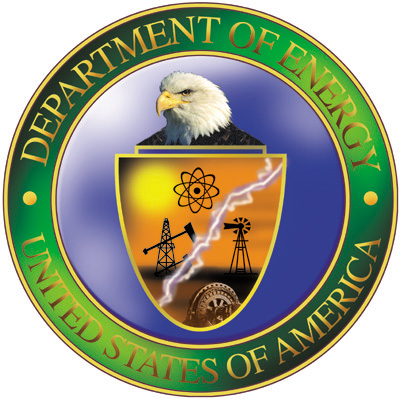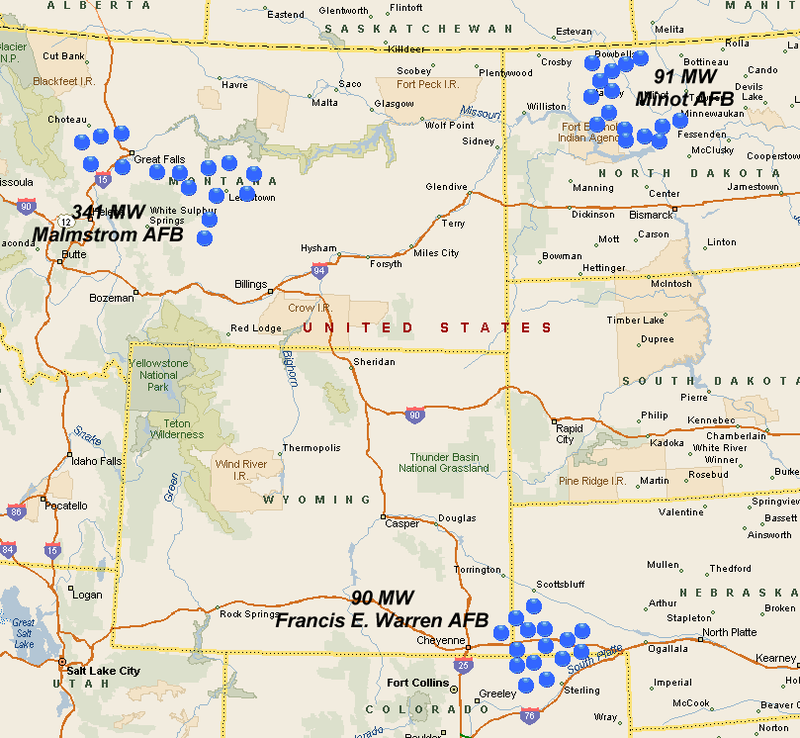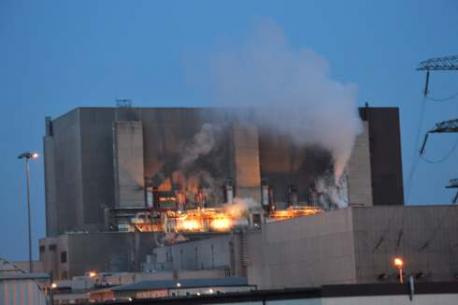
Blog
-
Geiger Readings for November 6, 2014
Ambient office = 65 nanosieverts per hourAmbient outside = 61 nanosieverts per hourSoil exposed to rain water = 81 nanosieverts per hourYellow bell pepper from Central Market = 77 nanosieverts per hourTap water = 123 nanosieverts per hourFiltered water = 116 nanosieverts per hour -
Nuclear Reactors 179 – The U.S. Department of Energy Is Funding Research on Advanced Nuclear Technology
I have blogged about United State federal support for research in the nuclear industry before. Recently, the U.S. Department of Energy selected five research and development projects to receive thirteen million in cost sharing funds as part of public-private partnerships. President Obama has articulated an “all-of-the-above” approach to development of future energy sources for the United States as featured in his State of the Union speeches and discussions of U.S. plans for climate change mitigation.
Areva Federal Services has partnered with the TerraPower Company, Argonne National Laboratory and Texas A&M University. This partnership will focus on modeling and simulation of extending the life of nuclear reactors cores. This work will include thermal hydraulic simulation and experimental investigation of liquid metal-cooled fast reactor fuel assemblies. Research in fast breeder reactors cooled by liquid metals has been going on for decades with little success. It is difficult to see exactly how a few million dollars is going to suddenly succeed.
GE Hitachi Nuclear Energy has also partnered with the Argonne National Laboratory. Their partnership will work on the development and modernization of next-generation probabilistic risk assessment methodologies. This is an interesting challenge given that we are still in the process of designing next-generation nuclear reactors which would make risk assessment difficult.
General Atomic has partnered with the University of California at San Diego and the University of South Carolina. Their partnership with research fabrication and testing complex silicon carbide structures related to advanced reactor concepts.
NGNP Industry Alliance has partnered with Areva, UltraSafe Nuclear Company, Westinghouse, and Texas A&M University. Their partnership will research high temperature gas reactor post-accident heat removal. I appreciate the fact that accidents can happen but maybe the money would be better spent in preventing accidents in gas reactors.
Westinghouse has partnered with the Argonne National Laboratory and the University of Pittsburg. Their partnership will focus on the development of thermo-acoustic sensors for sodium-cooled fast reactors. Sodium-cooled fast reactor projects have often failed and been abandoned but I suppose if we are going to keep throwing money at them, we should have good sensors.
The U.S. Energy Secretary claims that these public-private research partnerships on advanced nuclear technologies will help the U.S. achieve a “low carbon future.” He also said that “These types of investments are crucial to the continuing role of nuclear power as a significant contributor to the US energy economy.” This may be true but the important question is whether or not nuclear power should be a part of future U.S. electricity generation. One of the reasons that nuclear power is even considered as a possible low carbon power source is that some sources of carbon dioxide in the construction, fueling and waste handling of nuclear power reactors are not being included in the calculation of the nuclear power carbon footprint.
Considering that the construction of a single nuclear power reactor can run into billions of dollars, the grant of a few hundred million dollars for these “critical research projects” seems rather paltry. The DoE has been trying to give out twelve billion dollars in loans for nuclear reactor construction for seven year without success. Perhaps some of this money should be spent in developing these “advanced nuclear technologies” that we keep hearing about.
-
Radiation News Roundup November 5, 2014
Nuclear expert says Fukushima is a pretty close approximation of ‘The China Syndrome.’ enenews.com
A year-long operation to remove all the used fuel assemblies from the storage pool at the damaged Fukushima Daiichi unit 4 has been successfully completed. world-nuclear-news.org
Unit 1 of the Fangjiashan plant in China’s Zhejiang province has been connected to the electricity grid, becoming China’s 22nd operating power reactor. world-nuclear-news.org
-
Geiger Readings for November 5, 2014
Ambient office = 82 nanosieverts per hourAmbient outside = 118 nanosieverts per hourSoil exposed to rain water = 107 nanosieverts per hourRed bell pepper from Central Market = 49 nanosieverts per hourTap water = 81 nanosieverts per hourFiltered water = 75 nanosieverts per hour -
Nuclear Weapons 95 – More Firings and Disciplinary Action in the U.S. Nuclear Missile Forces
I have posted about problems in the United States nuclear missile forces in the past. In the last few years, the commander of U.S. nuclear missile forces was fired because of unacceptable drunken behavior at a conference in Russia, a second in command was demoted because he was passing counterfeit poker chips at a casino, missile control officers were punished for cheating on monthly exams intended to demonstrate their understanding of their duties and drug use was discovered among the personnel at the nuclear missile bases. In addition, there have been widespread morale problems and deteriorating facilities at U.S. nuclear missile bases for years. It was very disturbing for me to discover just bad it had gotten for our nuclear missile forces. Now more problems have just surfaced.
Col. Carl Jones, the Number Two commander of the 90th Missile Wing at F.E. Warren Air Force Base in Wyoming was just dismissed “for a loss of trust and confidence in his leadership abilities.” He has been reassigned to a position as special assistant to the wing commander. An internal investigation confirmed that he had been guilty of conduct unbecoming an officer and a gentleman, and cruelty and maltreatment of a subordinate. “In four separate instances, Jones acted in a manner that degraded his status as a senior officer and wing leader including maltreating a subordinate.”
Lt. Col. Jimmy “Keith” Brown was just relieved of command of his missile squadron last Monday “because of a loss of confidence in Brown’s ability to lead his squadron.” The investigation of Brown “substantiated that Brown engaged in unlawful discrimination or harassment.” The investigation also found that Brown “made statements to subordinates that created a perception within his squadron that pregnancy would negatively affect a woman’s career.” In addition, it was found that Brown had “failed to ensure the well-being of his troops.”
In March, two of Brown’s troops were operating a launch control center at the Minot missile base when they felt ill because a refurbishment project released fumes into the control center. The two crewmen remained at their posts because they were afraid that Brown would have taken action against them if they left the control rooms. They were eventually taken to the hospital.
Col. Richard Pagliuco, commander of the 91st Operations Group which has authority over three missiles squadrons at the Minor base, was also a target of the investigation at Minot. It was determined that Pagliuco “failed to promote and safeguard the morale, well-being and welfare of the airmen under his command.” The admitted administrative punishment for Pagliuco consisted of a letter added to his personnel file. The investigators would not share any more detailed account of punishment that Pagliuco might have received.
As I have said in past posts, service in the missile forces is not viewed as “plum” assignment. The missile bases are located in remote areas of Montana, Wyoming and North Dakota. The duty is demanding and tedious. If they are ever called on to launch the missiles, they know that they would be contributing to the end of human civilization. Bored to death, they fear ever being called on to execute their duty. Total nuclear disarmament must be pursued as vigorously as possible as threat to the future of the human race.
U.S. Minuteman nuclear missile sites:
-
Geiger Readings for November 4, 2014
Ambient office = 99 nanosieverts per hourAmbient outside = 97 nanosieverts per hourSoil exposed to rain water = 110 nanosieverts per hourCrimini mushroom from Central Market = 75 nanosieverts per hourTap water = 68 nanosieverts per hourFiltered water = 61 nanosieverts per hour -
Nulcear Reactors 178 – The NRC Improperly Withheld Documents From the U.S. Public
I have often mentioned my lack of faith in the competence and integrity of the United States Nuclear Regulatory Commission. I have blogged before about their failure to adequately monitor and regulate the nuclear power industry in the U.S. Today I am going to talk about another problem with the NRC. The Union of Concerned Scientists recently published an article by Dave Lochbaum, the director of the Nuclear Safety Project criticizing the NRC for withholding documents from the public.
In 2004, the NRC made the decision to withhold documents that it had received from nuclear power plant operators dealing with fire protection and emergency planning. The NRC policy paper admitted that most information related to fire protection and emergency planning would not need to be designated as sensitive. This means that the NRC had no need to withhold most such documents from the public but they decided to withhold many such documents anyway. The NRC policy paper stated that all fire protection and emergency planning documents from plant operators would be categorized as “nonpublic.”
The NRC maintains an online library called ADAMS that is open to the public. However, “nonpublic” documents are not placed in this online database. In addition, there is not even a mention of such documents in the index or bibliography of ADAMS. The 2004 NRC policy paper also said that the NRC “will review for release upon request” any request for any of the fire protection or emergency planning documents from plant operators. The problem with this policy is that the public currently has no way of even knowing that some documents even exist which makes requests for them impossible.
When Lochbaum discovered this NRC practice in 2014, he immediately filed a request under the Freedom of Information ACT (FOIA) for all incoming documents from all U.S. nuclear power plants that dealt with fire protection from October 1, 2004 to the present. Eventually, the NRC added hundreds of such documents to the ADAMS online database. When Lochbaum reviewed these documents he found a number of requests from nuclear power plant operators in 2006 and 2007 for amendments to or exemptions from NRC fire protection regulations during negotiations over relicensing. Some of these were granted by the NRC. Federal law states that the NRC must consider public input when reviewing licensing of nuclear power plants. Obviously this could not happen if the documents were hidden and the requests were granted without public input.
None of the information in the documents that Lochbaum reviewed were redacted meaning that the NRC did not consider any of the information in the documents to be of a “sensitive” nature justifying withholding them from public scrutiny. It turns out that none of the plant operators who submitted these documents requested that they be kept secret. The NRC withheld these documents from public access for reasons of their own which have not been adequately explained. Lochbaum has also requested the emergency planning documents that have been withheld by the NRC but has not received a response yet.
With respect to public transparency of its activities, the NRC says “Nuclear regulation is the public’s business, and it must be transacted publicly and candidly. The public must be informed about and have the opportunity to participate in the regulatory processes as required by law. Open channels of communication must be maintained with Congress, other government agencies, licensees, and the public, as well as with the international nuclear community.” The behavior of the NRC since 2004 has seriously violated what the NRC says is one of its core values of openness. This is just one more reason that the expansion of nuclear power in the U.S. is a very bad idea. If we cannot depend on government agencies to carry out their mandated activities with openness and transparency, we must depend on the honesty and competence of the nuclear industry which has proven to be unworthy of such trust in the past.
Fire at Hartlepool Nuclear Power Station near Cleveland:
-
Radiation News Roundup November 3, 2014
Japanese official says that Fukushima “destroyed our life… it can destroy history itself.” enenews.com
Food products ‘heavily contaminated’ by Fukushima found in US. enenews.com
French security chiefs are investigating a spate of mysterious and illegal flights by tiny, unmanned drones over French nuclear power stations. therakyatpost.com
-
Geiger Readings for November 3, 2014
Ambient office = 103 nanosieverts per hourAmbient outside = 126 nanosieverts per hourSoil exposed to rain water = 112 nanosieverts per hourCrimini mushroom from Central Market = 74 nanosieverts per hourTap water = 89 nanosieverts per hourFiltered water = 77 nanosieverts per hour






